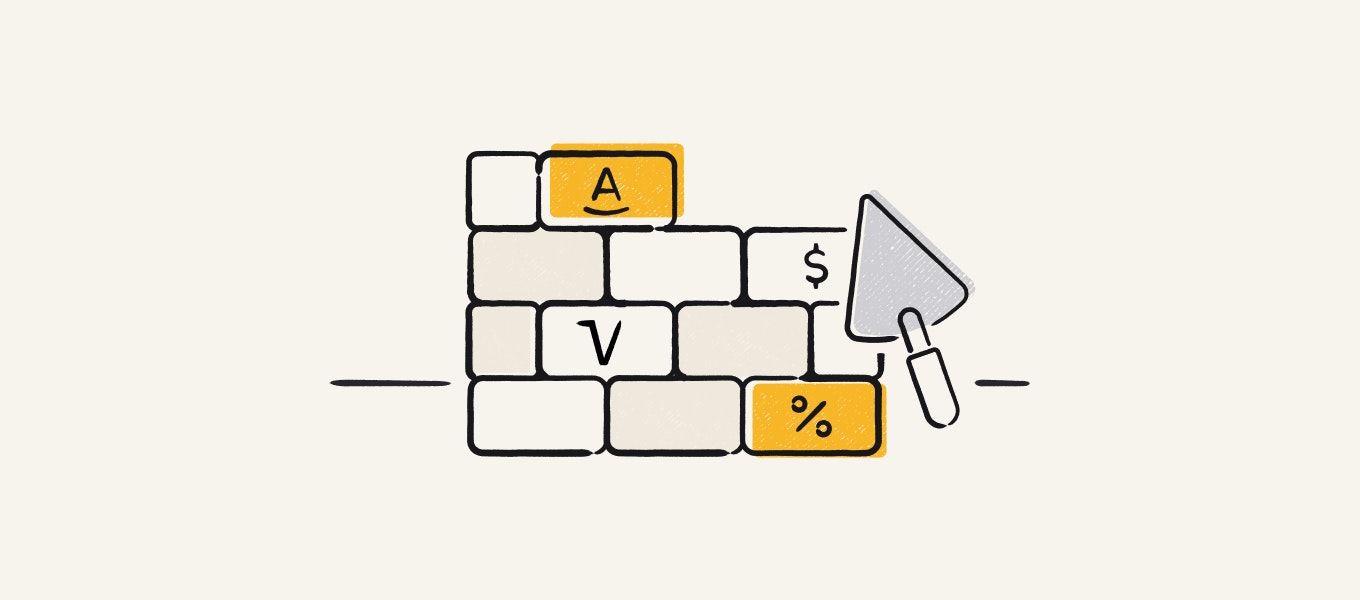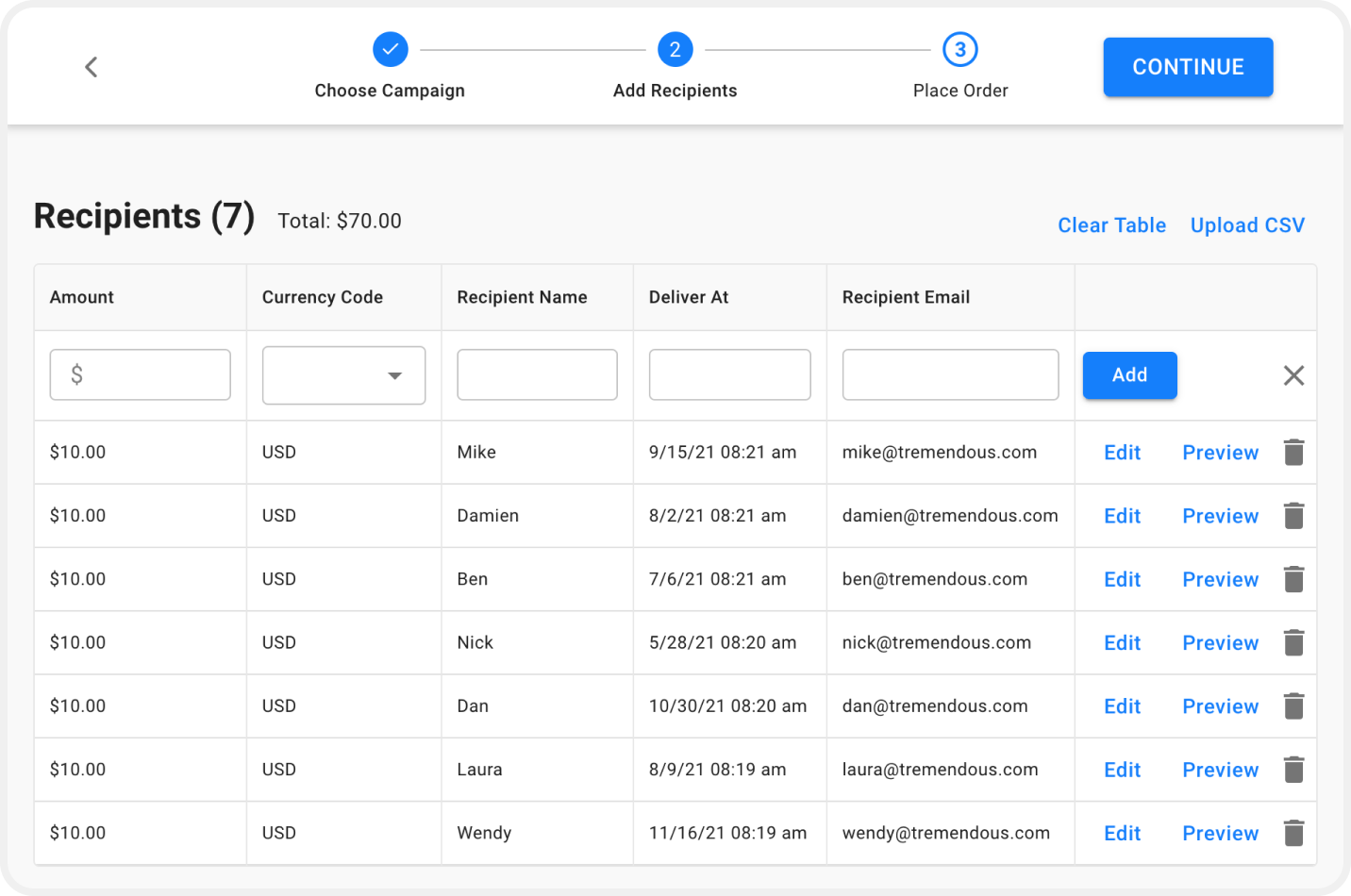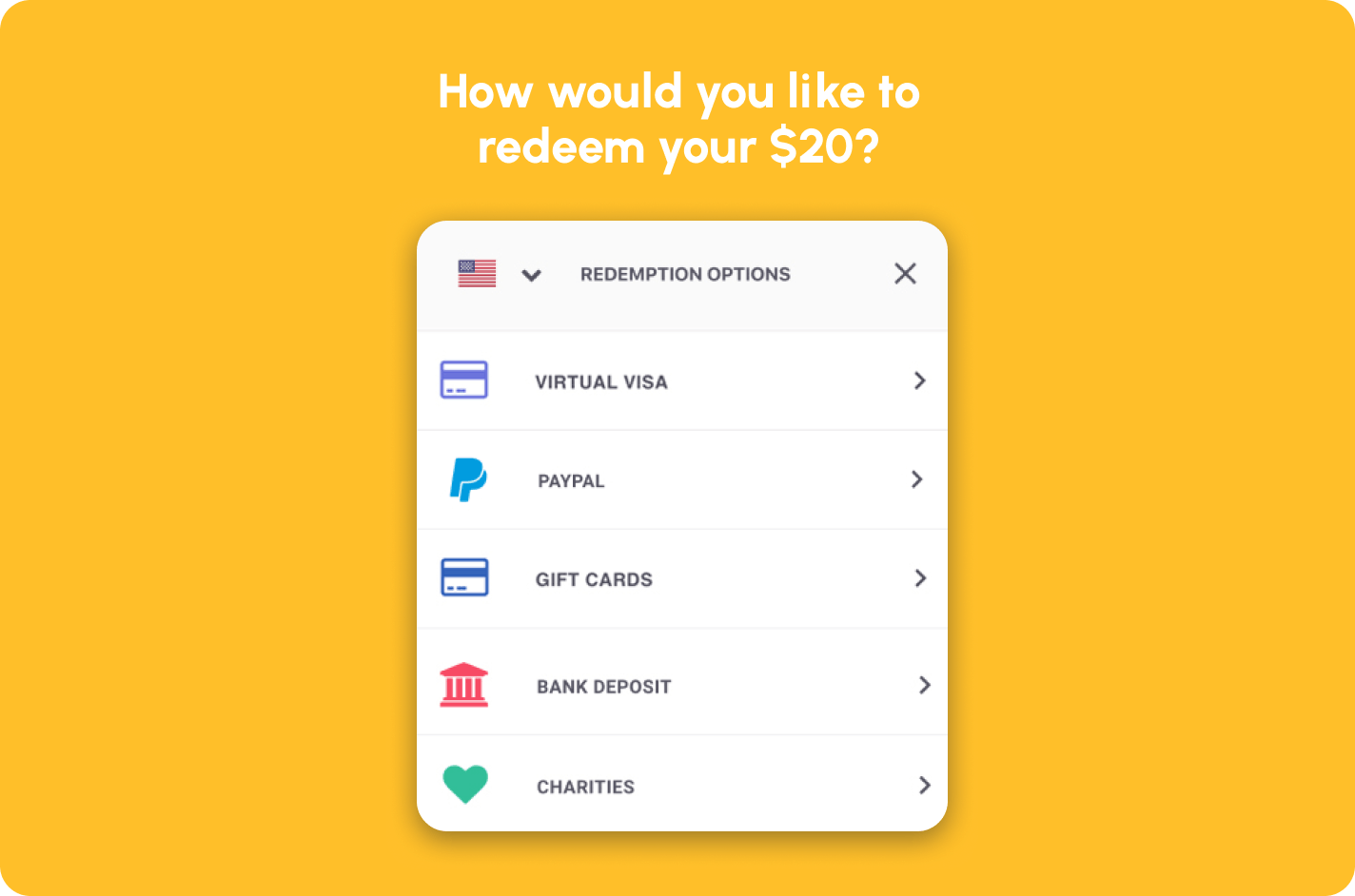How to set up a consumer rebates program with Tremendous

An optimized digital rebate program can boost sales without hurting margins. To do that, you must select incentives that your customers find valuable and craft compelling messaging.
Just as essential is using a system that can seamlessly deliver digital rebates at scale.
Luckily, building a rebate program using Tremendous is easy and free — you don’t need to spend any more than the value you’re sending. We’ll show you how to set up your rebate program in five steps.
___________________________________________________________________
🧠 Not ready to DIY a rebates program on Tremendous?
Here’s some other content that might be relevant.
___________________________________________________________________
How you configure your rebate program is dependent on the tech stack you’re using to manage your storefront, orders, promotions, and marketing campaigns. However, setting up a rebate program more or less breaks down into the following steps.
Step 1: Establish goals for your rebate campaign
Are you launching or attempting to drive sales to a particular product? Incentivizing subscription sign-ups? Maybe you’re rolling out the red carpet for a partnership promo?
The answer lays the groundwork for the kind of promotion you should build – whether shoppers need to hit a certain spending threshold, sign-up before a deadline, or purchase a specific SKU to qualify for the rebate.
Step 2: Select incentives that will get people excited
Our recent research on consumer rebate strategies finds that the most common rebate is for 30% of the retail price.
For a $100 item, you should consider offering a $30 rebate;
For a $150 item, you should consider a $45 rebate, etc.
There are, of course, other variables to consider. Consumers value incentive types such as cash and store credit differently (spoiler alert: store credit is not nearly as motivating), and people redeem higher-value rebates at higher rates.

The exact offer value you promote for your rebate program should balance these variables with your budget, as well as the number of units you need to move off the shelves or the sign-ups you need to drive.
Step 3: Promote accordingly
Once you’ve set the parameters for your rebate program, it’s time to figure out how you'll market it. Some ways to promote your rebate program include:
Highlight the promotion front and center on your website and in your email campaigns.
Share it on social media.
Encourage your sales and customer service folks to spread the word.
Learn how Evolus promoted their new neurotoxin with a cash incentive program that they primarily shared on social media, successfully winning over 180,000+ patients.
Tips on framing your rebate:
Using the dollar value of the rebate (rather than a % of the product price) is the single most impactful improvement.
Action verbiage (“earn” vs “get” for example) matters much less, though “earn” performs slightly better than others.
Noting that rebates are “easy to redeem” makes them more attractive to employed adults. (Needless to say, make sure the redemption process is actually easy.)
Be transparent about any time delay between purchase and rebate disbursement (to account for a return window, for example).
Step 4: Verify the customers who qualify
The next step in setting up a rebate program is to ensure that you have a mechanism in place for consumers to claim, and for you to verify orders that qualify to receive, the rebate.
Rebates require customers to perform an action post-purchase. This can be providing proof of purchase by uploading a receipt, particularly for brick-and-mortar purchases, or filling out a landing page form for e-commerce brands.
Once the orders begin to roll in, in your e-commerce platform or CRM, you can then tag those who performed the desired action accordingly (for example, as “Rebate Approved”). All you need to do is export that list.
Step 5: Use Tremendous to quickly (and even automatically) send out rebates

Create a branded campaign template in Tremendous with your logo, messaging, and the incentives that you previously selected. You can also set the value amount and let your customers pick their own incentives.

Format the list you exported to include the required columns, bulk upload it within the Tremendous Dashboard, and click send (or schedule to send, if there’s a time delay). Boom, done in minutes.
Note: if there’s a set turnaround time for the rebate based on time of purchase, you can repeat this workflow once a day or week.

Then, when the customer accesses the reward, they can select an incentive that’s meaningful to them — cash, prepaid card, gift card, or donation.
Examples of rebate programs
Rebate programs come in all shapes and sizes today, and often they're not even called rebate programs. Some examples include:
Cash back with purchase — This is a fancy name for a regular old rebate program. The consumer purchases something and gets an incentive in return.
Sign-up incentive — many services offer a rebate in the form of a sign-up incentive. For instance, if you switch to one cellular phone provider from another, they might offer you a $50 Visa prepaid card.
Incentives for attending a sales meeting — many sales cycles rely on consumers first taking a meeting. To increase attendance rates, many salesfolks offer incentives. These are, in essence, a rebate. For instance, solar panel providers often require an in-home consultation prior to consumer purchasing. The sales are often finalized in that meeting, and thus the consumer gets a rebate for the purchase of the panels.
Learn more about rebates and how they compare to discounts as consumer incentives.
Bonus: Automate rebates with our Shopify template
Steps 4-5 can be automated. You can trigger a reward each time you approve a rebate-qualifying order in Shopify by using this Zap.
If you use a different e-commerce platform or CRM like WooCommerce or Hubspot, you can easily send a reward each time a certain purchase is made or order volume is met by connecting it to Tremendous using Zapier.
You can also integrate Tremendous directly into your own website or internal systems using our API to automate incentives when a customer qualifies for a reward.
Ready to build your rebate program?
Sign up and start sending rebates (and other rewards) immediately. Or book a demo, and strategize with our team.